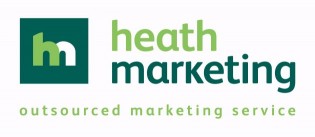Most people I talk to are very ‘marmite’ on the subject of trade shows. They either love them or hate them. There’s lots of choice out there – B2B, B2C, sector specific and geographically focussed and the truth is, with appropriate planning – you’ll get out what you put in.
Trade shows will certainly eat into your resources (both time, energy, collateral and financial) but the pay off can be enormous. The important thing is to choose the right show and exhibit there with the right approach. Here is my guide on how to make the most out of exhibiting.
1. Ask yourself if this tradeshow is right for you.
Who is going to be attending as a visitor/delegate? Who do you need to attend for this to be a success?
- potential suppliers
- existing or potential customers or
- those who could influence others to buy from you?
If the answer to this is yes, then you’re on the right track.
2. Does this fit in with your plan?
Yes, that old chestnut. But really, what would be the point of attending if you’re not sure what it is you are trying to achieve. So, if you have a specific objective that ties in with your marketing plan – you’ll be more focussed.
How many leads could this show generate for you and what is your target (e.g. conversion rate / leads generated / data collected etc)? If you attach numbers to your objective, you’ll become much more focussed.
3. Have you got the resources?
To give your exhibition the best chance of success you have to invest in it. This doesn’t just come down to £s but also includes:
Collateral:
The stand itself, any dressing (flowers, tablecloths, TV screens, posters, lamps, scalectrix (yes, I’ve used these little racetracks in the past!), printed material (keep it minimal), business cards, giveaways, tea and coffee, etc
People:
Have you got enough people to man the stand? Good. Now add another one or two. Too many is better than too few, a busier stand looks better. These are usually long days so give your people the chance to go off and have a break so that they come back refreshed and all smiles.
Time – before during and after the event there are endless things to do:
Before:
- Update your website to let everyone know that you’ll be attending.
- Build exhibition tweets telling everyone your stand number into your social media tactics (these can be scheduled in via Hootsuite – the world will forgive you).
- Contact those in your database who are relevant and invite them along to your stand.
- Contact people you’d like to do business with and ask them for an appointment at a specific time.
- Make sure that you have all of the set up and take down details from the organisers.
During:
- Set up the night before if you can. That way on the day you can arrive promptly and stress free.
- Keep focussed on your objective.
- Keep good notes on who you’ve spoken to, why they’ve come to talk to you and their contact details.
- And grade them in terms of their likeliness to contribute positively to your objectives. Maybe red, orange, green, or hot, warm, cold. Whatever works for you.
- Have a de-brief with staff before you leave and while it’s all still fresh in your minds.
After:
Immediately:
- Get your follow ups right. How many of us get back from a trade show to find our inbox full of thank yous from people we met the day before? Personal, relevant emails will be far more effective – directing to a post-event page on your website or blog perhaps.
- Look at your newly built contacts. Should you just email high probability contacts? Or follow them on social media platforms. Or connect with them on LinkedIn? Why not phone them instead and build on the relationship you’ve just created? The chances are you’ll have gone one step further than many others.
Six months:
- Carry out some analysis – has attending the exhibition met your objectives? What have you learnt? Would you do the same again next time, or do something a bit differently?
I always think twice about exhibiting – it takes a huge amount of time and effort, as you can see. But when it’s done correctly, exhibiting at a tradeshow can be great fun and make positive contributions towards your business success. If you’re thinking about exhibiting at a tradeshow this year, but aren’t sure where to start, or need some practical help, then why not contact me to see if I can help.
